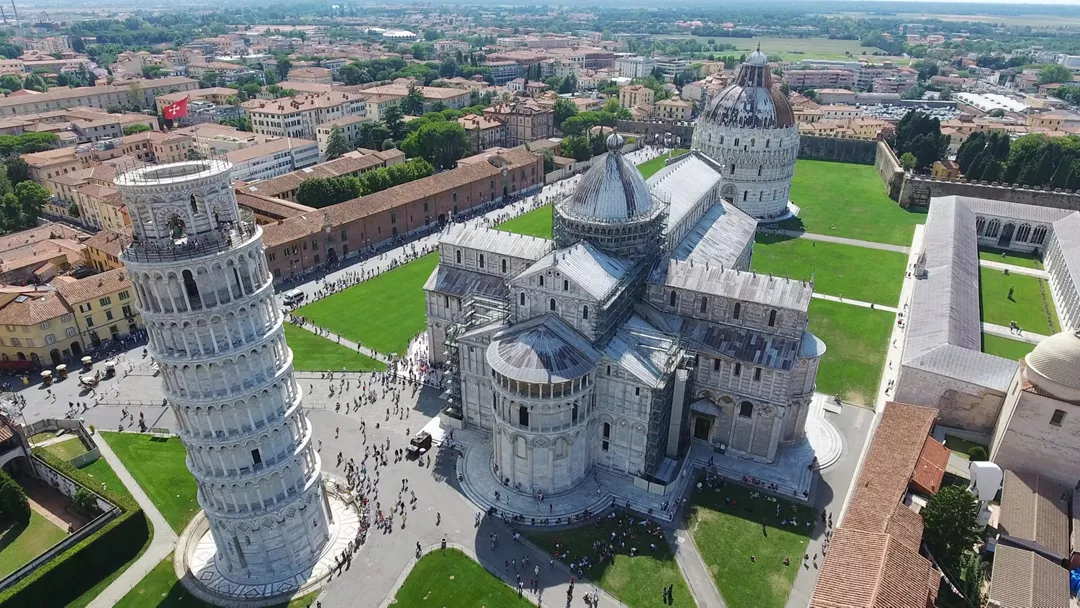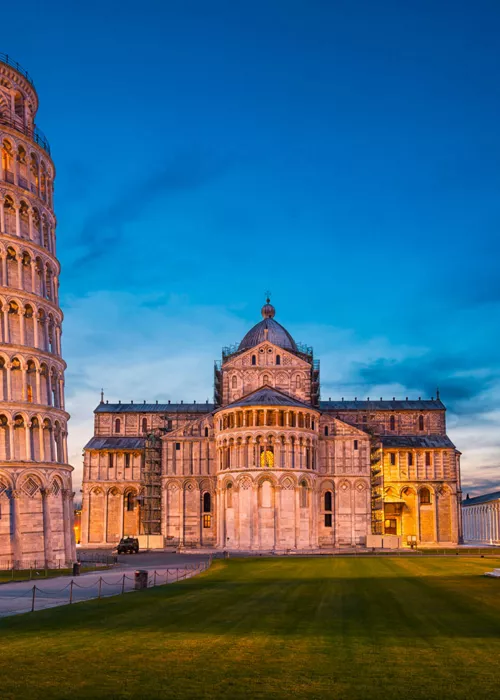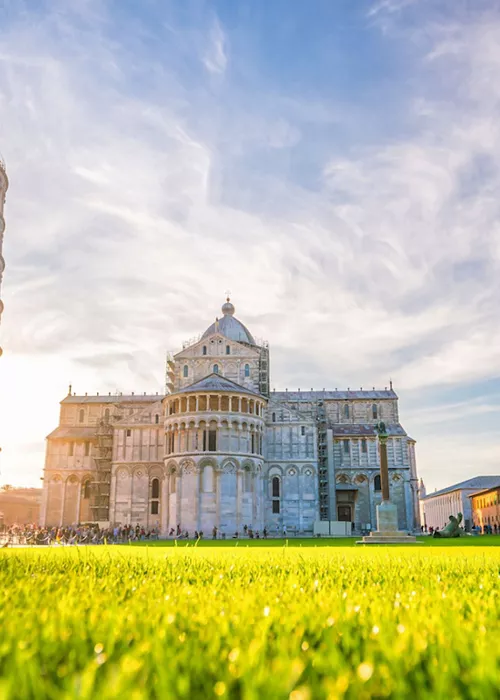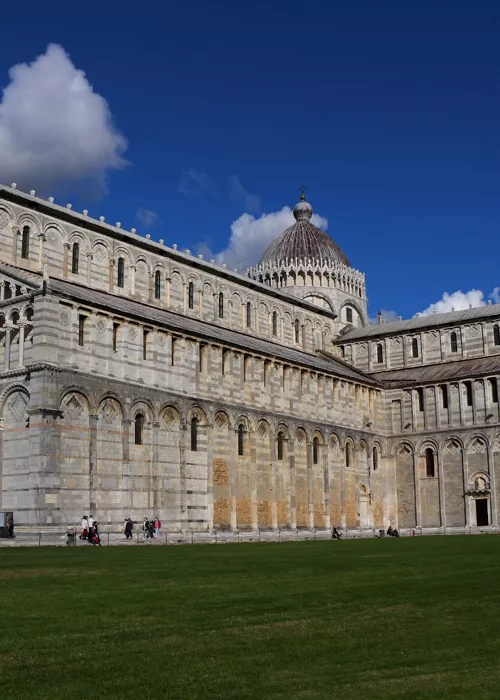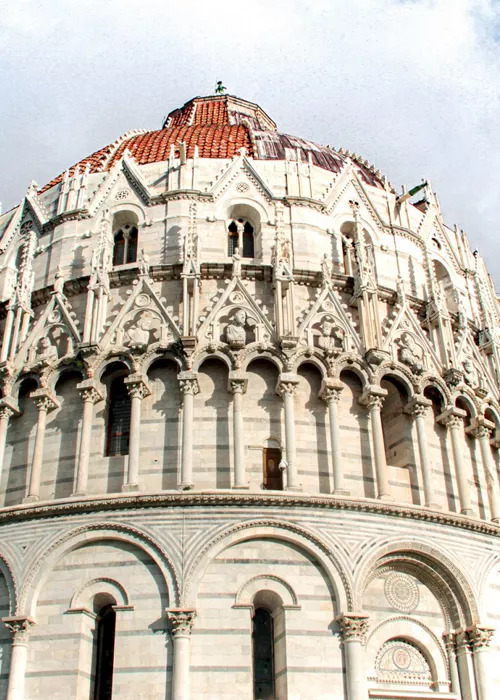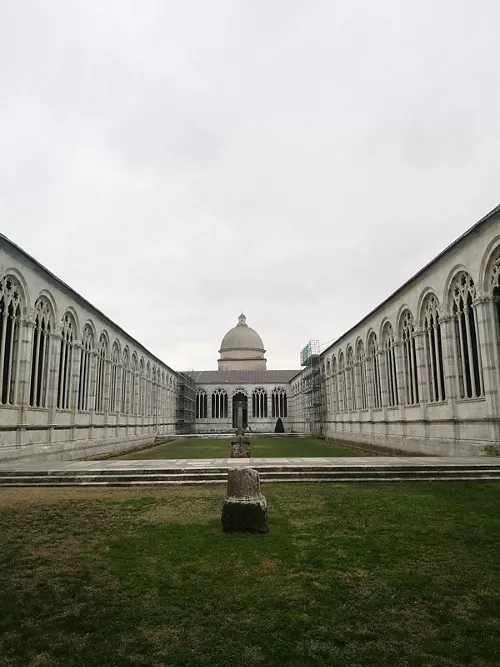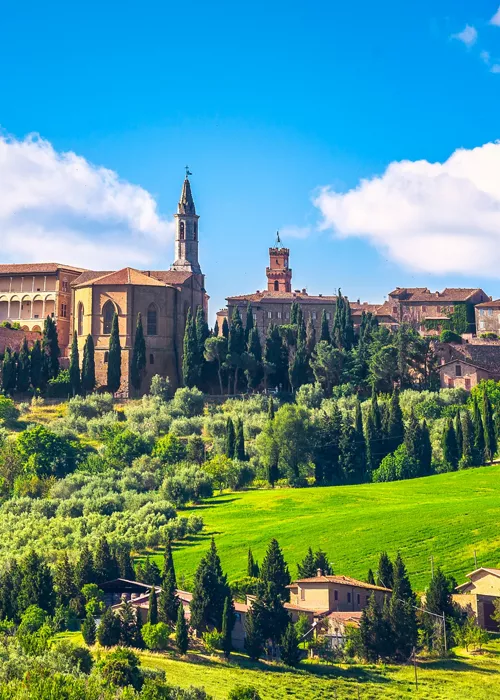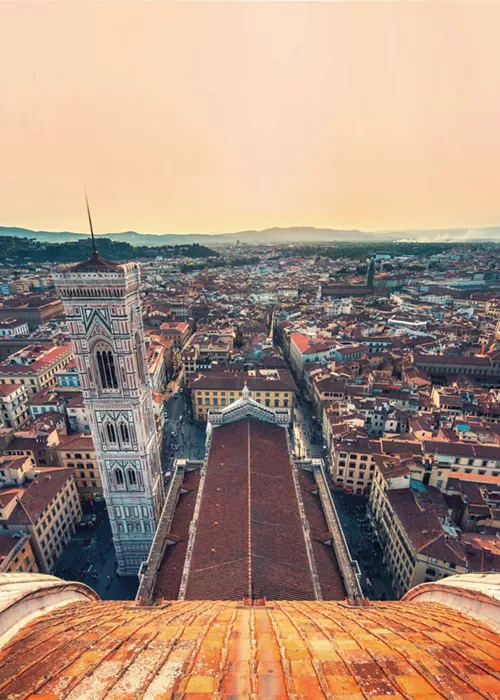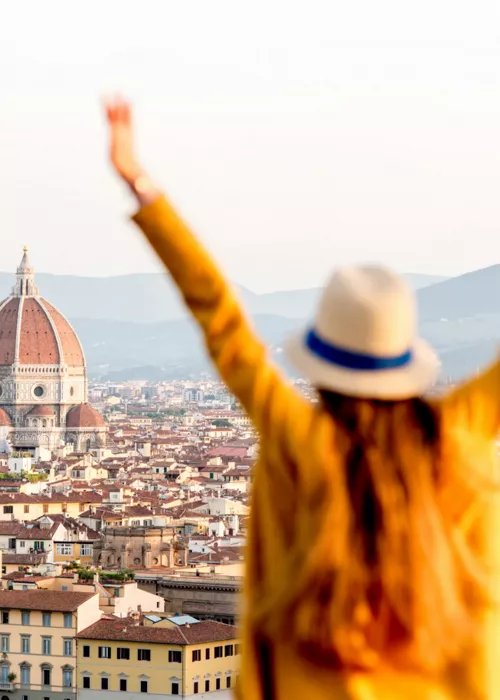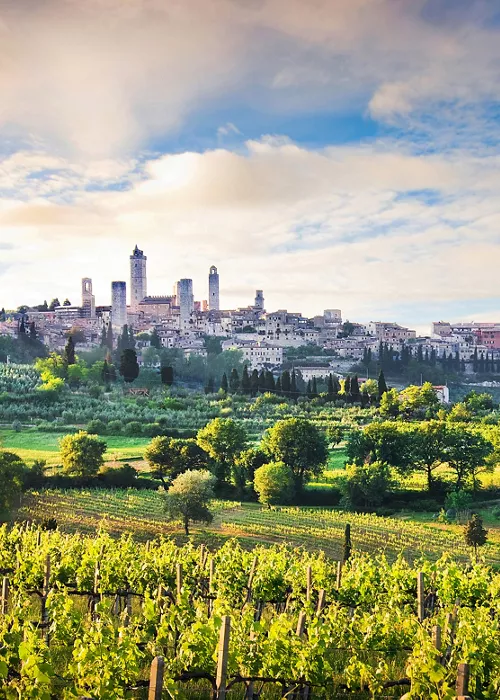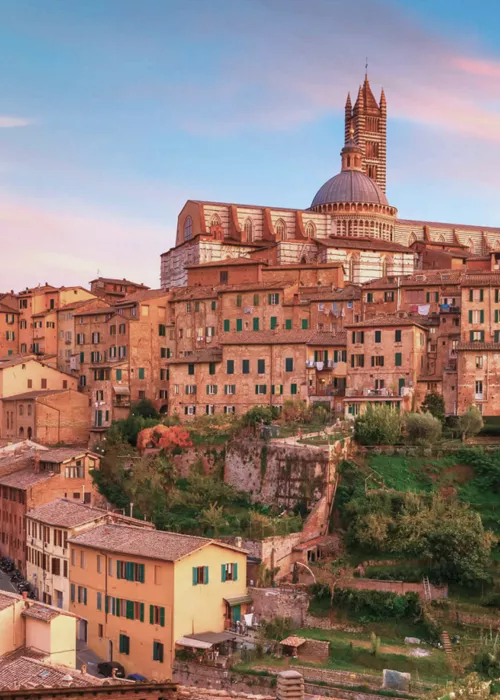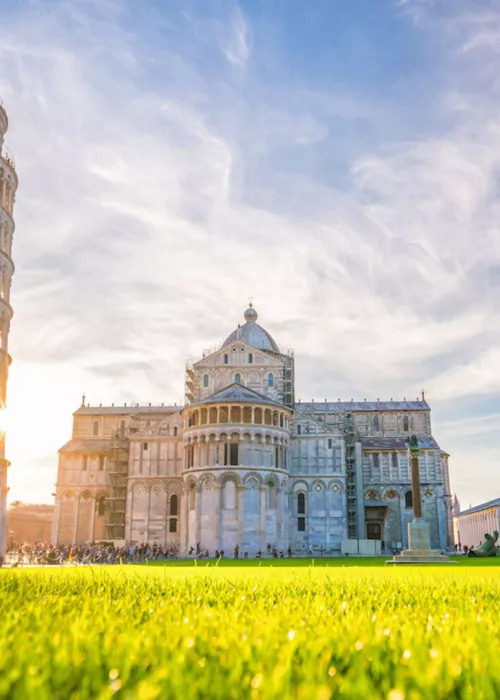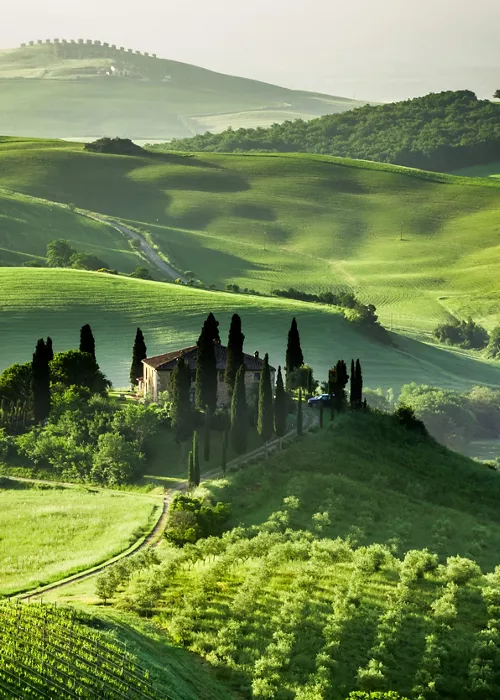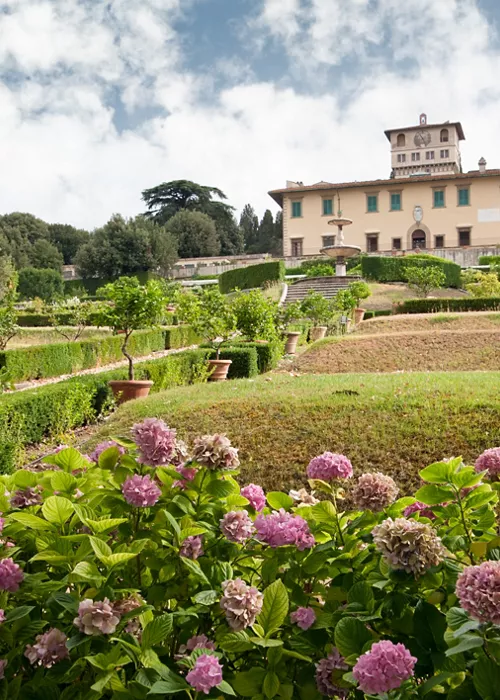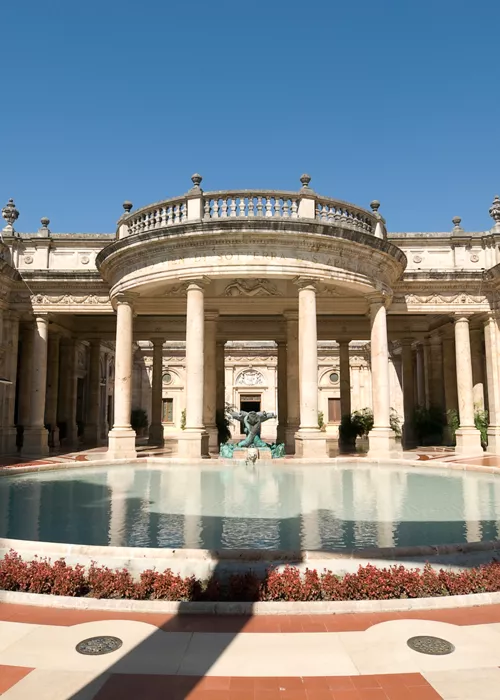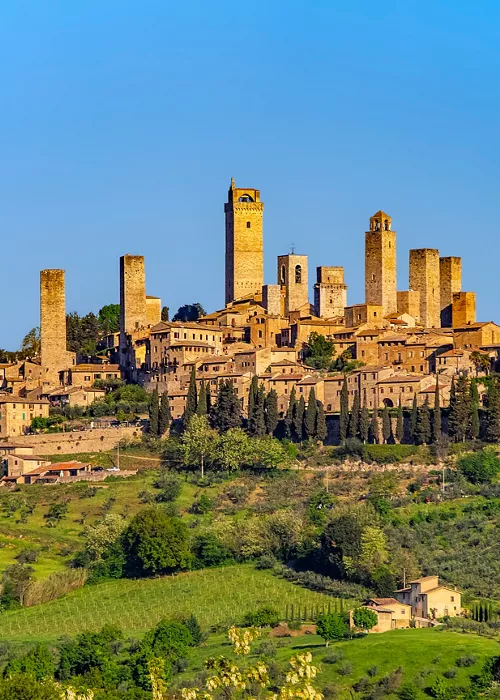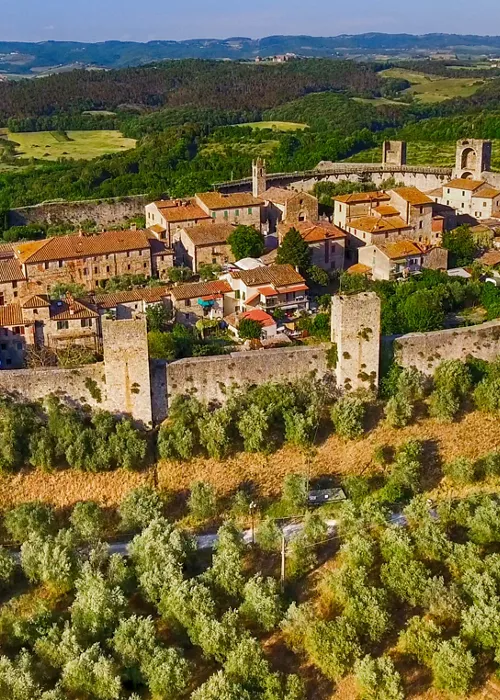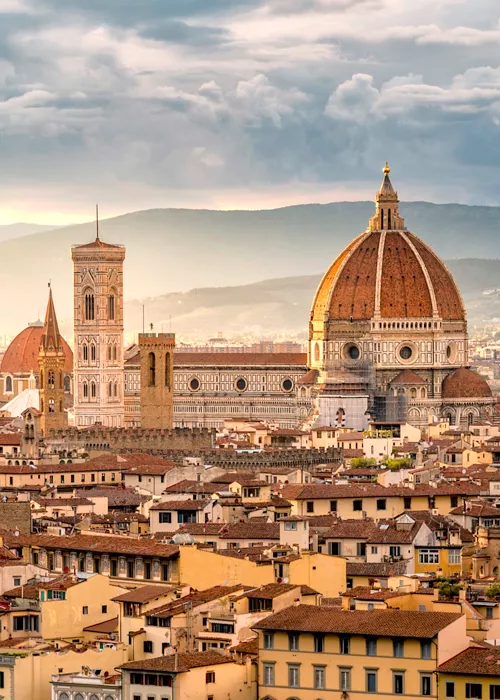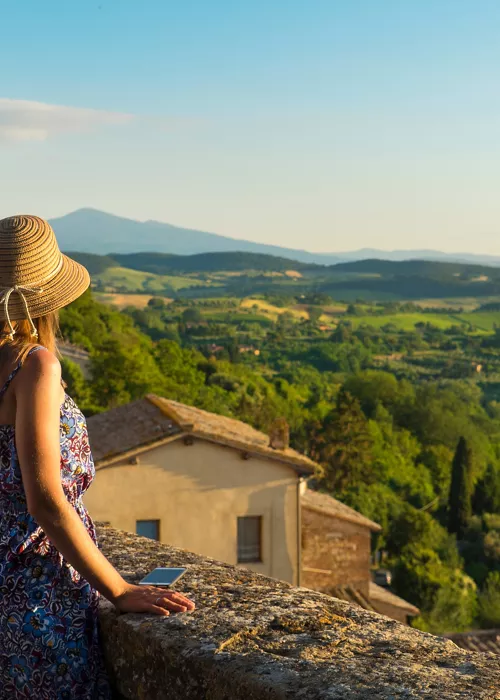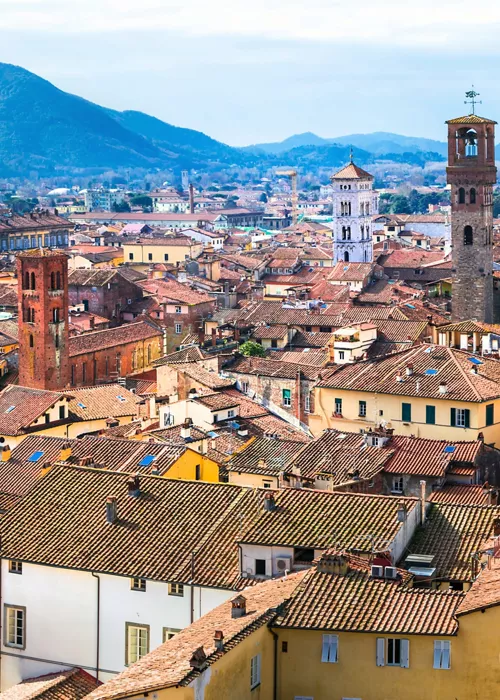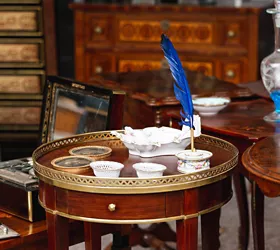Pisa and Piazza dei Miracoli, jewels of extraordinary beauty
4 minutes
This symbol of the power of the Maritime Republic of Pisa is better known as Piazza dei Miracoli after the poet Gabriele D'Annunzio's definition of the city for the extraordinary beauty of its architectural jewels.
Ready to lose yourself in the wonders of this unique square?
Where the Piazza dei Miracoli in Pisa is located
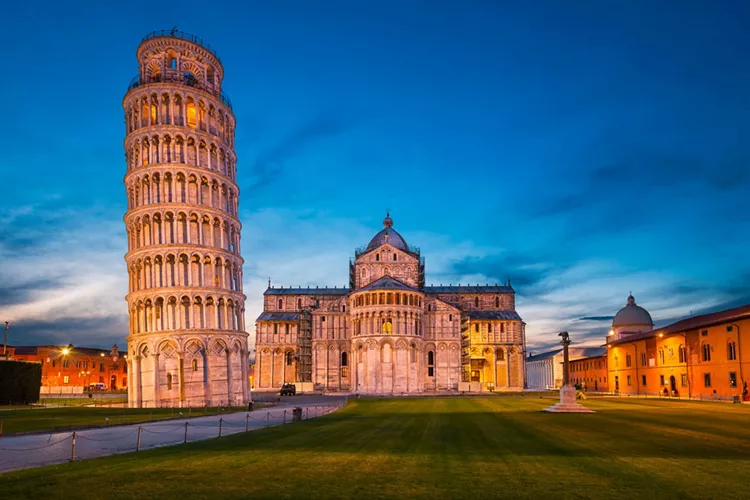
The enormous Piazza del Duomo in Pisa lies just outside the historical centre of the medieval city, which was too small to contain the imposing religious centre that began with the foundation of the Duomo di Santa Maria Assunta, built in 1063 to celebrate the greatness of what was then the powerful Maritime Republic of Pisa.
The Prato dei Miracoli, as it was called by D'Annunzio in 1910, is a wide expanse of green lawn on which stand the four world-famous masterpieces of medieval monumental art: the famous Campanile or Leaning Tower, the Camposanto, the Baptistery and the Duomo.
History and information on Pisa and the Piazza dei Miracoli
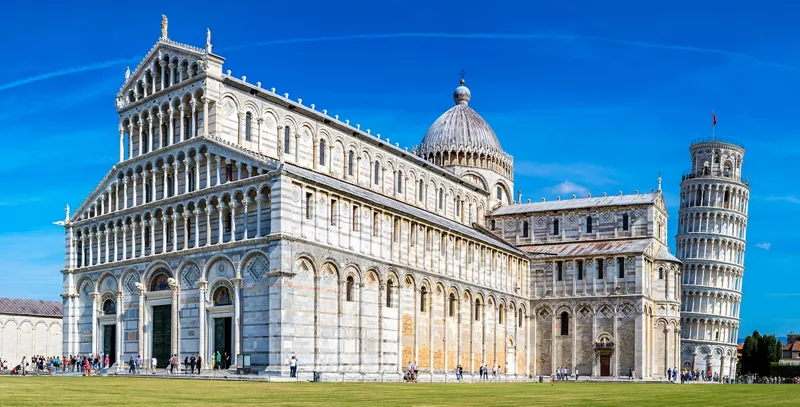
The history of Piazza dei Miracoli is tied to the time when Pisa, a powerful maritime republic, was at its peak as early as the year 1000. The idea was to have an important religious centre symbolising the main stages of every man's life: birth with the Baptistery, life with the Cathedral of Santa Maria Assunta and its Tower, and death with the Cemetery.
The construction of these landmarks began in 1063 by the Opera della Primaziale Pisana, a lay-ecclesiastical body created in the same year specifically to manage the Pisa Cathedral complex.
The final appearance of the square only came in the 19th century thanks to the architect Alessandro Gherardesca, who demolished some minor buildings and gave prominence to the four masterpieces defined as miracles by Gabriele D'Annunzio.
Why it is a UNESCO site
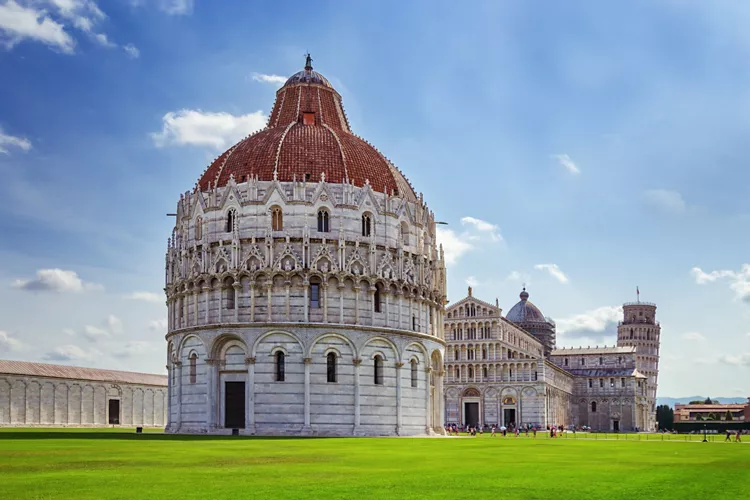
Piazza dei Miracoli and its four masterpieces of medieval Christian architecture are among the first Italian sites listed as UNESCO World Heritage Sites.
It was 1987, in fact, when the United Nations agency recognised the uniqueness of this square and its monuments rich in medieval and Renaissance art treasures such as the bronze and mosaic doors of the Duomo, the pulpits in the Baptistery and the Duomo, the frescoes in the Campo Santo, and many others.
Piazza del Duomo, however, also has the merit of having marked the birth of the Pisan Romanesque style, later exported to the rest of Tuscany, mainly to Lucca and Pistoia.
What to see in the Piazza dei Miracoli in Pisa
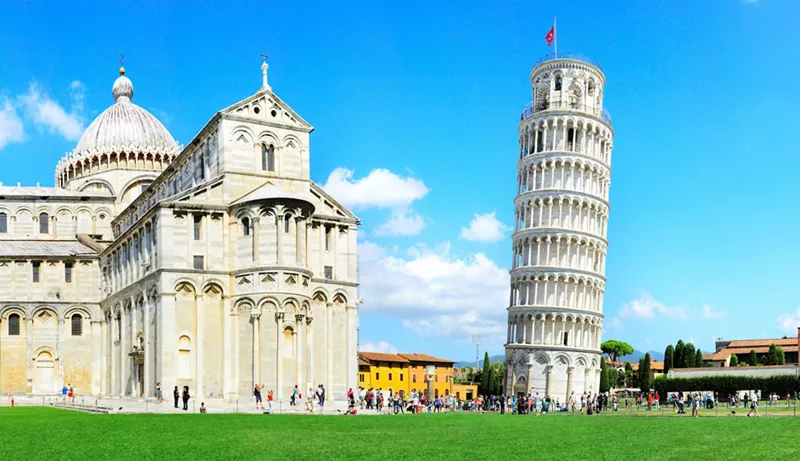
Those visiting Pisa for the first time must start with its most iconic, world-famous monument, the Leaning Tower that stands in Piazza del Duomo behind the cathedral of which it is a part. Although it may seem like a monument in itself, the Tower of Pisa originated as the bell tower of the cathedral.
Construction began in 1173 with six rows of small loggias echoing the Duomo's motif, but the Tower was only completed in the second half of the 14th century due to subsidence in the ground below that caused the structure to slope, a feature that has contributed to making it the symbol of Pisa visited every year by millions of people from all over the world. The Leaning Tower of Pisa, 57 metres high, can be visited by climbing the 294 steps of the spiral staircase, and offers a unique view of the entire square and the beautiful surrounding landscape.
Pisa Cathedral is the symbol of the Pisan Romanesque style, a mix of classical, Islamic, Lombard and Byzantine elements that testify to the deep contacts between the Maritime Republic of Pisa and the rest of the Mediterranean. After admiring the magnificent facade, prepare to be surprised by its interiors rich in works of art, starting with the pulpit by Giovanni Pisano, considered one of the greatest masterpieces of Italian Gothic art.
Opposite the cathedral stands the Baptistery dedicated to St John the Baptist, the largest in Italy with a circumference of 107 metres and a height of 54 metres. Begun in 1153 by Diotisalvi and completed in the 14th century, the Pisa Baptistery also combines typical Romanesque and Gothic elements. The interior houses the pulpit by Nicola Pisano, son of Giovanni, but the real magic is the exceptional acoustics associated with the double dome. You will only need to utter a few words to realise this, but if you are shy you can count on the security personnel who perform short vocal intonations every 30 minutes to bring out the power of the echo.
The Camposanto di Pisa closes off the north side of Piazza dei Miracoli. It is a monumental cemetery begun in 1277, surrounded by a marble enclosure and with the internal structure of a cloister. The word camposanto (“holy field”) derives from this building of art and archaeology and has become synonymous with “cemetery” in Italy. Today you can walk through the long corridors and discover the rich collection of Roman sarcophagi in which several prominent Pisan personalities of the past are buried.
The frescoes that decorated the Cemetery for centuries were damaged in 1944, but have been carefully restored for years and today these masterpieces, including Buonamico Buffalmacco's The Triumph of Death, are kept in the nearby Museo delle Sinopie.
Pisa, however, is also much more.
From Piazza dei Miracoli, you can walk through the historical centre of the city to Piazza dei Cavalieri, the result of an extensive renovation entrusted to Giorgio Vasari in 1558. The square is overlooked by the church of Santo Stefano dei Cavalieri, the Palazzo del Consiglio dei Dodici and the Palazzo della Carovana, home to the Normale di Pisa, one of the oldest, most respected and sought-after universities in the world.

